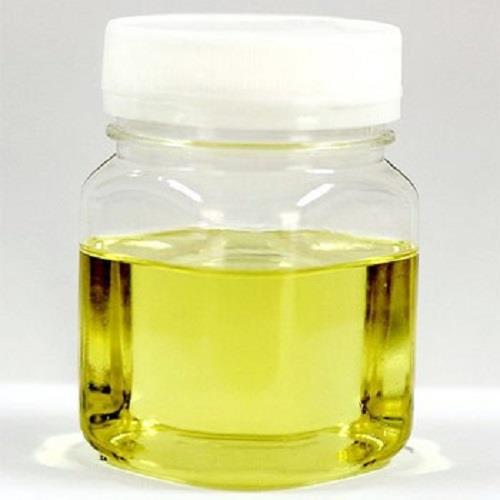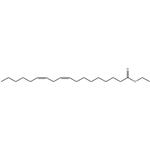Ethyl Linoleate (LA-EE): Structural and Physicochemical Background for Dermatological and Cosmeceutical Research
Aug 26,2025
Introduction
Ethyl linoleate (LA-EE) is the ethyl ester of linoleic acid, a polyunsaturated ω-6 fatty acid with two cis double bonds. Compared to free linoleic acid, esterification enhances its lipophilicity, stability, and skin penetration while allowing enzymatic hydrolysis to release active linoleic acid. As a pale-yellow oily liquid with low water solubility and high lipid solubility, LA-EE is suitable for lipid-based and dermal delivery systems. These structural and physicochemical properties underpin its research value, supporting applications in acne treatment, sebum regulation, skin pigmentation control, wound healing, and advanced cosmeceutical or drug delivery formulations.

Application
Anti-acne and sebum regulation
Acne vulgaris is a major clinical problem; despite a vast array of treatment modalities available for acne, there is considerable dissatisfaction in acne treatment among patients and doctors. Rising antibiotic drug resistance consequent to the widespread use of topical antibiotics is causing concern and effective nonantibiotic treatments are needed.
The new lotion containing triethyl citrate and ethyl linoleate has been shown to be an effective treatment for mild to moderate acne, with an effect on both inflammatory and noninflammatory acne lesions. The new lotion worked quickly and was generally well tolerated. A surprising finding was the significant impact the new lotion has on sebum production, suggesting a role in patients with seborrhoea. This nonantibiotic preparation will be a very useful addition to existing treatments for acne. [1]
Whitening and inhibition of melanin production
Ethyl linoleate is an unsaturated fatty acid used in many cosmetics for its various attributes, such as antibacterial and anti-inflammatory properties and clinically proven to be an effective anti-acne agent. The effect of ethyl linoleate on the melanogenesis and the mechanism underlies its action on melanogenesis in B16F10 murine melanoma cells. The results revealed that ethyl linoleate significantly inhibited melanin content and intracellular tyrosinase activity in α-MSH-induced B16F10 cells, but it did not directly inhibit activity of mushroom tyrosinase. Ethyl linoleate inhibited the expression of microphthalmia-associated transcription factor (MITF), tyrosinase, and tyrosinase related protein 1 (TRP1) in governing melanin pigment synthesis. An observation finds that ethyl linoleate inhibited phosphorylation of Akt and glycogen synthase kinase 3β (GSK3β) and reduced the level of β-catenin, suggesting that ethyl linoleate inhibits melanogenesis through Akt/GSK3β/β-catenin signal pathway. Therefore, ethyl linoleate may be useful as a safe whitening agent in cosmetic and a potential therapeutic agent for reducing skin hyperpigmentation in clinics. [2]
Combined regulation of skin inflammation
The endocannabinoid (eCB) system plays an active role in epidermal homeostasis. Phytocannabinoids such as cannabidiol modulate this system but also act through eCB-independent mechanisms. Study evaluated the effects of cannabidiol, bakuchiol (BAK), and ethyl (linoleate/oleate) (ELN) in keratinocytes and reconstituted human epidermis. Molecular docking simulations showed that each compound binds the active site of the eCB carrier FABP5. However, BAK and ethyl linoleate bound this site with the highest affinity when combined 1:1 (w/w), and in vitro assays showed that BAK + ELN most effectively inhibited FABP5 and fatty acid amide hydrolase. In TNF-stimulated keratinocytes, BAK + ELN reversed TNF-induced expression shifts and uniquely downregulated type I IFN genes and PTGS2 (COX2). BAK + ELN also repressed expression of genes linked to keratinocyte differentiation but upregulated those associated with proliferation. Finally, BAK + ELN inhibited cortisol secretion in reconstituted human epidermis skin (not observed with cannabidiol). These results support a model in which BAK and ELN synergistically interact to inhibit eCB degradation, favoring eCB mobilization and inhibition of downstream inflammatory mediators (e.g., TNF, COX-2, type I IFN). A topical combination of these ingredients may thus enhance cutaneous eCB tone or potentiate other modulators, suggesting novel ways to modulate the eCB system for innovative skincare product development. [3]
Burn wound treatment
Studies of the efficacy, in terms of burned wound healing, of a mixture of Ethyl Linoleate (ethyl 9-12 (cis, cis) octadecadienoate) with alpha-1-histidine, alpha-tocopherol, and TBHQ (hELate) was undertaken in 12 swine. The species was selected so as to study an animal with skin anatomy similar to the human. Statistically significantly greater healing occurred in 730 C/7sec contact burns (20% BSA) treated with hELate than in untreated burns in pigs. Further, there was no contracture noted in the hELate treated lesions, while marked contracture occurred in the untreated burns. Additionally, there was a proportional increase in weight gain amongst swine studied as their burn lesions epithelialized. In order to evaluate the compatibility of hELate with selected, currently-used topical antibacterial agents, 154 rabbits with 20% 730 C/7 sec contact burns were studied. The lipid was applied (0.01 ml/cm2 burn) at 1 hour postburning; the topical agent was applied at 2 hours post-burn and every 24-hours. All animals were washed once daily. hELate was applied only once. The study found no statistical difference in the number of subjects healed or in the mortality between animals treated with hELate alone and those treated with the agent plus Gentamycin cream, Neosporin cream, and silver sulfadiazine 1% in Unibase USP (compounded at Medical College of Georgia specifically and only for this study.) The study suggests that Ethyl Linoleate agent (hELate) may be used safely in combination with selected antibacterial substances. Further, these selected combinations seem to be non-toxic and appear to allow the calorie-saving and healing effects of the lipid to proceed unimpeded. [4]
References
[1] Charakida, A., Charakida, M., & Chu, A. C. (2007). Double-blind, randomized, placebo-controlled study of a lotion containing triethyl citrate and ethyl linoleate in the treatment of acne vulgaris. The British journal of dermatology, 157(3), 569–574. https://doi.org/10.1111/j.1365-2133.2007.08083.x
[2] Ko, G. A., & Kim Cho, S. (2018). Ethyl linoleate inhibits α-MSH-induced melanogenesis through Akt/GSK3β/β-catenin signal pathway. The Korean journal of physiology & pharmacology : official journal of the Korean Physiological Society and the Korean Society of Pharmacology, 22(1), 53–61. https://doi.org/10.4196/kjpp.2018.22.1.53
[3] Swindell, W. R., Bojanowski, K., Singh, P., Randhawa, M., & Chaudhuri, R. K. (2022). Bakuchiol and Ethyl (Linoleate/Oleate) Synergistically Modulate Endocannabinoid Tone in Keratinocytes and Repress Inflammatory Pathway mRNAs. JID innovations : skin science from molecules to population health, 3(3), 100178. https://doi.org/10.1016/j.xjidi.2022.100178
[4] Jelenko, C., Wheeler, M. L., Anderson, A. P., Callaway, B. D., & McKinley, J. C. (1975). Studies in burns: XIV, Heling in burn wounds treated with Ethyl Linoleate alone or in combination with selected topical antibacterial agents. Annals of surgery, 182(5), 562–566. https://doi.org/10.1097/00000658-197511000-00005
- Related articles
- Related Qustion
Supplementation with pyridoxal 5'-phosphate monohydrate can synthesize neurotransmitters such as dopamine and serotonin, maintaining a healthy nervous system.....
Nov 4,2025Biochemical EngineeringEltrombopag olamine (TPO-R agonist) treats ITP-related thrombocytopenia (adults/≥1y kids), with bioequivalence studies in Chinese.....
Aug 26,2025APIETHYL LINOLEATE
544-35-4You may like
- ETHYL LINOLEATE
-

- $0.00 / 1kg
- 2025-11-22
- CAS:544-35-4
- Min. Order: 1kg
- Purity: 98%
- Supply Ability: Customise
- ETHYL LINOLEATE
-

- $10.00 / 1KG
- 2025-11-14
- CAS:544-35-4
- Min. Order: 1KG
- Purity: 99%
- Supply Ability: 10 mt
- Ethyl linoleate
-

- $47.00 / 5g
- 2025-11-10
- CAS:544-35-4
- Min. Order:
- Purity: 99.69%
- Supply Ability: 10g






